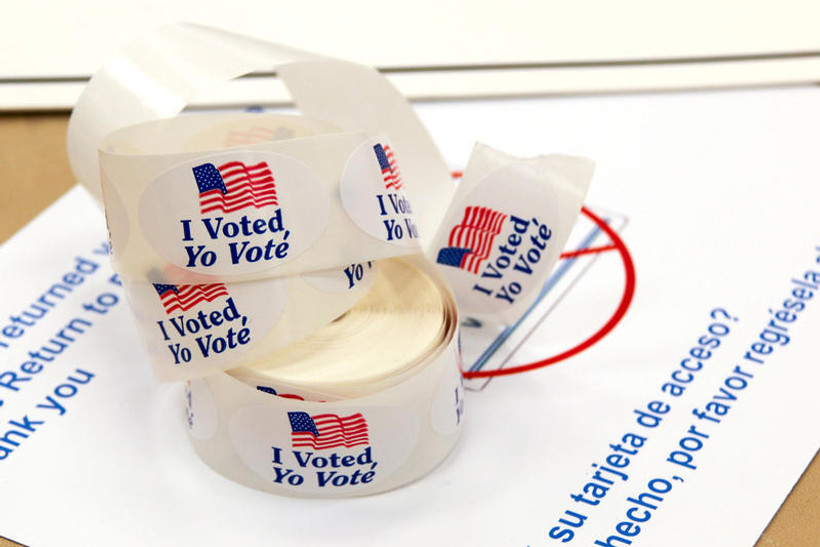On the surface, it looks like a clear enough story. New York mirrored a national lurch to the right that is sending Donald Trump back to the White House with a decisive margin. In the famously blue state, Trump performed better than any Republican at the top of the ticket since 1988. In New York City, he claimed 30 percent of the vote — nearly double his share in 2016. It was enough for pollster Nate Silver to conclude on Wednesday that “the story of Trump’s win was foretold in New York City.”
But look more closely, and a wrinkle in that story emerges.
Nationally, Trump did surge — not just in his share of the vote but likely in the total number of votes cast for him, with millions left to be counted in California and other states. Total turnout across the country could come close to the record set in 2020, according to a Washington Post analysis.
In New York, though, turnout took a clear drop this year. Statewide turnout hovers just under 58 percent this year, down from over 61 percent in 2020. That could translate to at least half a million fewer votes, and puts New York in the bottom 10 states for voter turnout nationally.
Democrats at the top of the ticket paid the price. With most of the vote accounted for, Kamala Harris received some 900,000 fewer votes in New York than Joe Biden did in 2020. Trump, meanwhile, improved on his 2020 tally by roughly 200,000 votes. That’s a smaller increase than he saw from 2016 to 2020. (Both candidates’ final tallies should increase somewhat as the final votes are counted.)
“The voters didn’t go overwhelmingly to the Republican side. They just stayed at home and did not vote,” said Jasmine Gripper, co-chair of the New York Working Families Party, of Tuesday’s results.
The lack of voter interest was especially pronounced in New York City, where turnout looks set to fall below even 2016 levels.
“In a way, New York got redder because it got less blue,” said Steven Romalewski, director of the CUNY Mapping Service and co-creator of the NYC Election Atlas. He pointed to Staten Island, where Trump gained only about 1,000 votes since 2020 — but Harris lost some 25,000 compared to Biden that year.
“Sometimes New Yorkers take for granted their job in national elections,” Gripper said. She blamed two factors for this year’s drop specifically: Harris’s compressed campaign timeline and decision not to hold a rally in the state; and a broader failure among state Democrats to communicate to voters about why they should bother coming to the polls.
Anger with the Biden administration over the Gaza war also cost Harris votes, Gripper added. One indicator? Over 50,000 voters left the presidential field on their ballots blank – slightly more than voted blank during the “Leave It Blank” campaign in the Democratic primary.
New York State Democratic Committee chair Jay Jacobs said the state party wasn’t to blame for underwhelming turnout this year.
“Voter turnout overwhelmingly is driven by the candidates and the issues, and not so much our field organizing,” Jacobs said. “It’s not unique to New York … If voters aren’t as enthused about the candidates, they don’t come out.”
The state Republican Party did not respond to a request for comment.
Voters in competitive House districts showed up to the polls in greater numbers than their peers across the state, and largely rewarded Democrats, who flipped three seats and held two in the seven races that New York Focus tracked.
But even some of those districts saw fewer voters come to the polls than in 2020, a New York Focus analysis found.
One challenge for New York Democrats, Jacobs said, is that they don’t have a permanent campaign arm — they have to rebuild it at every election.
“My first go-around a state chair, I pushed for a permanent apparatus,” he said. “Problem you have with that is it takes a lot of money.”
National Democratic groups send tens of millions of dollars to swing states every election cycle; New York got $100,000 this year, “and that’s a heck of a lot more than we’ve ever gotten,” Jacobs said. Moving forward, the state party plans to raise money to maintain some permanent infrastructure, including offices and staff upstate, “so we’re not always reinventing the wheel,” he added.
Another obstacle to boosting turnout: New York is years late in implementing an automatic voter registration law passed in 2020. Proponents say the measure could bring as many as 1 million New Yorkers onto voter rolls, on top of the roughly 13.5 million registered now.
That still leaves open the question of how to draw more of those voters out on election day.
Gripper said the disaffection with Democrats that led many New Yorkers to either stay home or vote Trump on Tuesday owed in part to the party’s failure to address the cost of living crisis that many in the state are feeling.
“If Democrats don’t demonstrate how they’re going to work together in a cohesive way, where they have trifecta of power in the state, to really find big solutions for the housing crisis, big solutions for the cost of childcare, they will lose voters,” she said.

